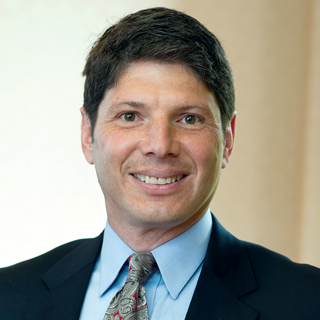
The news is full of stories about opioid abuse throughout the country. Why are so many people using opioids? The reason is simple: Opioids mask the sensation of pain. It is natural to want to take the edge off pain so you feel like you’re functioning normally or sleeping most of the night without pain waking you up.
According to the National Institute of Drug Abuse in the late 1990s, pharmaceutical companies assured the medical community that patients would not become addicted to prescription opioid pain relievers — and healthcare providers began to prescribe them at greater rates. This subsequently led to widespread misuse of these medications before it became clear opioids could be highly addictive. And while opioids may mask pain temporarily, their effectiveness is inconclusive in many cases when people use them for a long period of time.
Side effects and risks of opioids can be grave and include depression, overdosing, addiction and withdrawal symptoms. People who use opioids for thirty days or more in an effort to treat pain could be increasing their risk of developing depression, according to a new study reported by the Pain News Network in “Long Term Opioid Use May Cause Depression,” published in the Annals of Family Medicine.
Fortunately, there is an alternative to opioid use, but it is not considered as often as it should be. Physical therapists see a lot people with injuries or illnesses who are experiencing pain, so we speak from experience when we talk about alternate options. Therapists treat a range of injuries and pain which may arise from body systems such as the musculoskeletal, neuromuscular and skin systems.
Physical therapists can help treat pain by using a variety of methods:
• A physical therapist will conduct an evaluation and examination that includes interviewing patients with pain and then assessing for sources of pain. Depending upon the origin of pain, the physical therapist can use evidenced-based approaches to not only alleviate the pain but to educate patients on ways to prevent recurrence or minimize future episodes.
• Current approaches to chronic pain includes not repeatedly asking patients to rate their pain on a number scale or otherwise. The reason is to take away the focus from rating the pain intensity. Rather, the clinician must focus on what patients report they can or cannot do and highlight the functional “wins.” Along with this, movement is key and exercise is movement.
At our company, therapists often see examples of physical therapy’s ability to reduce pain. One involves a middle aged man who is an avid exerciser. He injured his shoulder related to repeated overhead lifting and lowering.
The patient presented with range of motion restriction, weakness of the rotator cuff and signs of rotator cuff impingement. He had received a cortisone injection, which reduced his pain, but still needed more assistance. He was able to progress with range-of-motion and strengthening exercises, along with education on proper lifting techniques and modulating the amount of weight he lifted. One and a half years later, this patient continues to participate in high intensity crossfit exercise and reports he was back to lifting within six months. He continues to do so successfully and safely.
If you are a therapist and your patients are experiencing chronic pain, what can you do to help? Communication is key, along with knowing your audience. Point out that exercise and physical therapy are strong alternatives to pain medications whose benefits may be short lived.
It is important to note that the CDC’s opioid prescription guidelines recognize that prescription opioids are appropriate in certain cases, including cancer treatment, palliative care, and end-of-life care, and also in certain acute care situations, if properly dosed. However, patients should choose physical therapy under the following conditions, according to the CDC:
§ The risks of opioid use outweigh the rewards. Potential side effects of opioids include depression, overdose and addiction, plus withdrawal symptoms when stopping opioid use. Even in cases when evidence on the long-term benefits of non-opioid therapies is limited, “risks are much lower” with non-opioid treatment plans.
§ Patients want to do more than mask the pain. Opioids reduce the sensation of pain by interrupting pain signals to the brain. Physical therapists treat pain through movement while partnering with patients to improve or maintain their mobility and quality of life.
§ Pain or function problems are related to low back pain, hip or knee osteoarthritis or fibromyalgia. The CDC cites “high-quality evidence” supporting exercise as part of a physical therapy treatment plan for those familiar conditions.
§ Pain lasts 90 days. At this point, the pain is considered “chronic,” and the risks for continued opioid use increase.
All in all, it is important to remember that physical therapists can help patients immensely by partnering with them to reduce pain. If patients can be convinced that opioid use is at best a temporary solution that causes more problems than it solves, they will have a better chance at a more lasting recovery.
Kristy Brown, MS, CCC-SLP has more than 25 years of management experience as CEO/ President of Centrex Rehab and former executive director at Augustana Therapy Services.
 Clinical Physical Therapy Specialist Matthew Mesibov, PT, GCS (left) is responsible for providing clinical support to the physical therapists and physical therapy assistants at Centrex Rehab.
Clinical Physical Therapy Specialist Matthew Mesibov, PT, GCS (left) is responsible for providing clinical support to the physical therapists and physical therapy assistants at Centrex Rehab.






